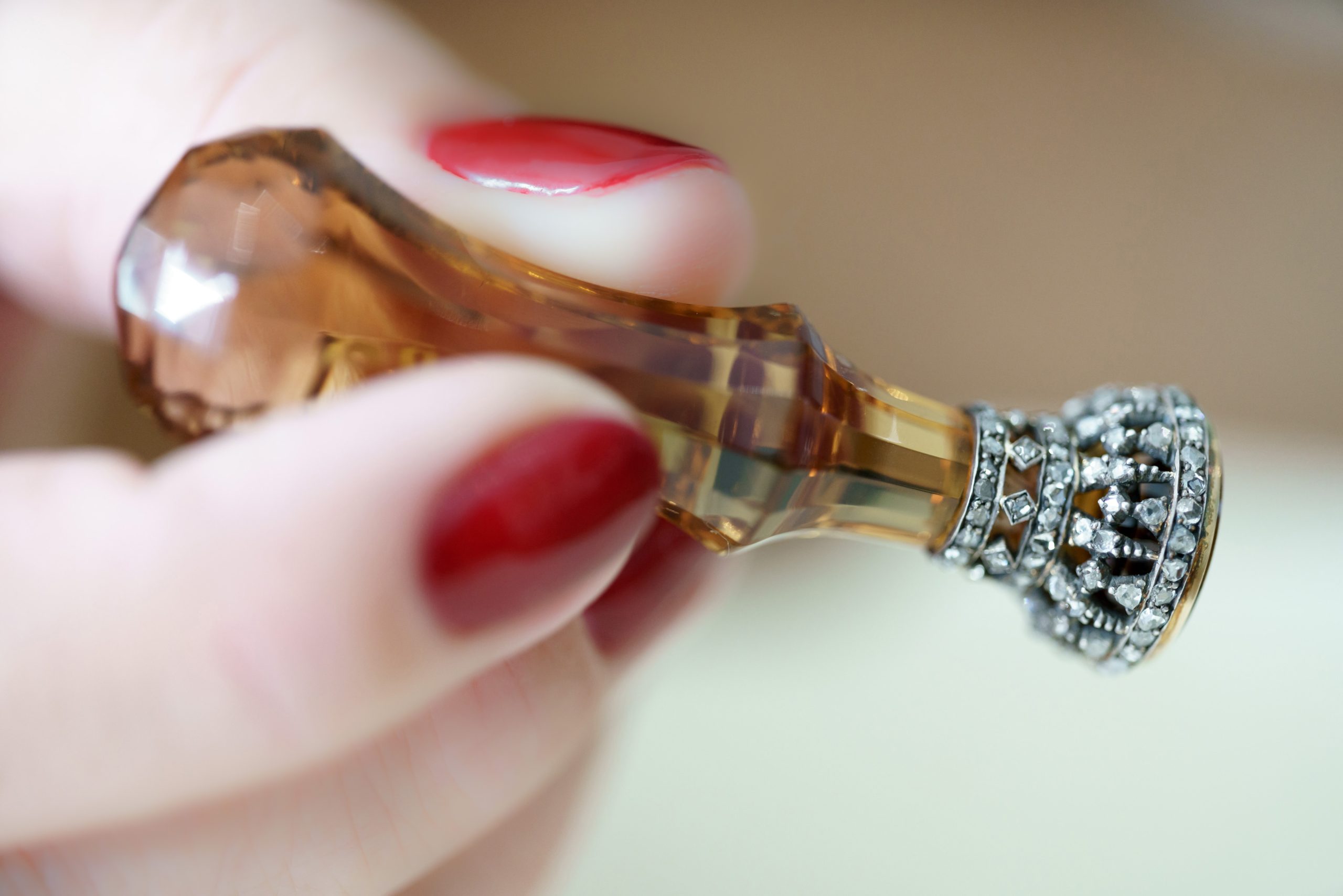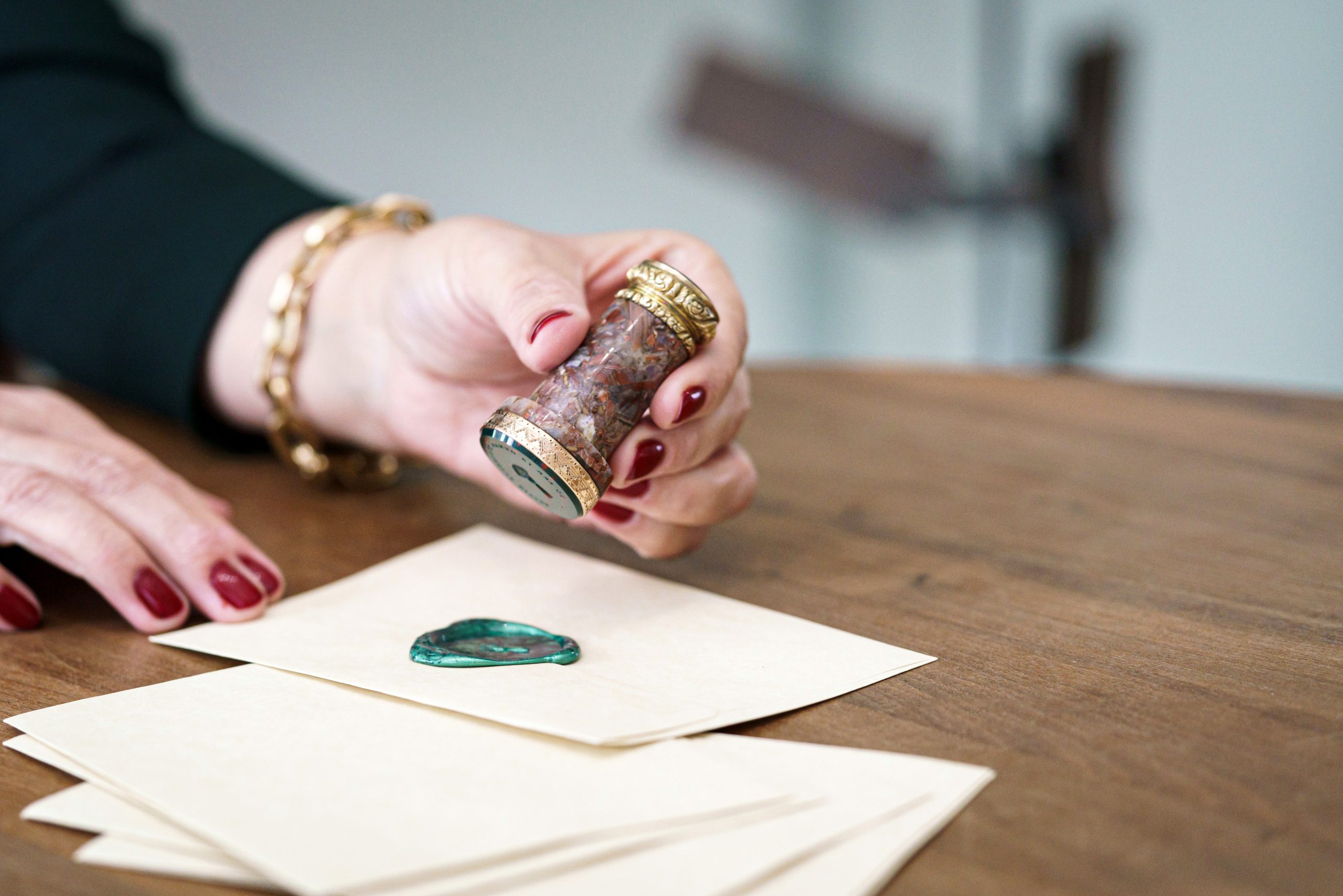
Rare royal desk seal belonging to Princess Margaret expected to fetch £8k
A personal desk seal belonging to Her Royal Highness Princess Margaret is expected to fetch more than £8,000 when it goes under the hammer.
The 19th century quartz and diamond seal forms part of a collection of over 50 high profile historic desk and fob seals being sold with Lyon & Turnbull in London on 17 October.
The Matrix Collection had been curated over several decades by David Morris, one of the most influential collectors in the field.
Morris amassed the seals for their historical interest as well as their beauty.
Engraved with the initial ‘M,’ the simple italic on Princess Margaret’s seal suggests that it was a personal seal, used for intimate correspondence.

Credit: Mike Jones
Princess Margaret was born in 1930 at Glamis Castle in the north east of Scotland, the younger daughter of King George VI and Queen Elizabeth, The Queen Mother, and sister of the late Queen Elizabeth II.
In the post-war years she became one of the world’s most celebrated socialites, famed for her glamorous lifestyle and reputed romances.
This legendary two-day sale included furniture, silver, works of art, jewellery and decorative objects from her personal collection, including the seal being auctioned by Lyon & Turnbull.
Princess Margaret’s desk seal is being offered alongside another belonging to her great-grandfather, King Edward VII (1841 – 1910).
This two-colour gold and hardstone double-ended seal, also valued between £6,000 – £8,000 is engraved with the Prince of Wales’s crest.
The larger bloodstone matrix is engraved with a hand holding thirteen cards, within an inscription that reads, To err is human, to forgive divine.

Credit: Mike Jones
Included in the sale of desk seals is a rose quartz desk seal belonging to Edward VII’s mother and father, Queen Victoria (1819-1901) and Albert, Prince Consort (1840-1861).
The piece is engraved with the initials VA with the royal crown above and is expected to fetch between £800 and £1,200.
‘It is an honour to be handling and selling such an impressive and an extraordinary collection, both in terms of quality and quantity,’ said Charlotte Peel of Lyon & Turnbull.
‘The use of desk seals died out during the 1940s and these exquisite objects, handled every day by Royals and nobility, offer a tantalising glimpse into history.
‘Today, we leave our signature digitally, but desk seals were a solid and beautiful way to make a mark.’
Wax seals were widely used from the Middle Ages until the nineteenth century when letters could be safely sealed with glue.
The practice of sealing with wax was continued by royalty well into the middle of the twentieth century.
As well as being elegant and prestigious objects to own, the seals have a practical use, making a unique impression when dipped in hot wax to prove authenticity on the part of the sender of a letter, and to seal documents to prevent them from being opened.
Read more on Scottish Field’s News pages.
Plus, don’t miss the November issue of Scottish Field magazine.
TAGS

